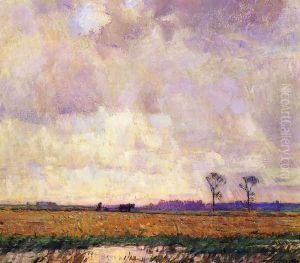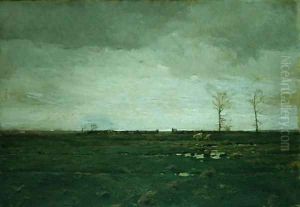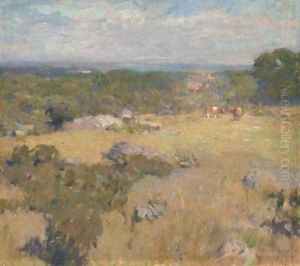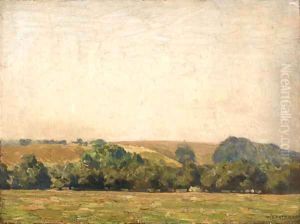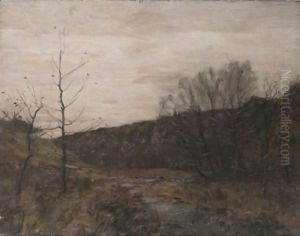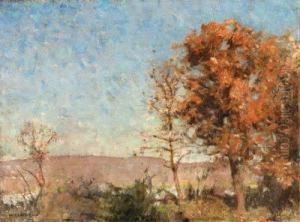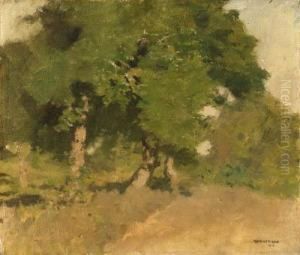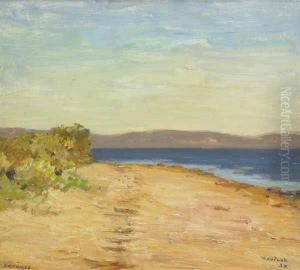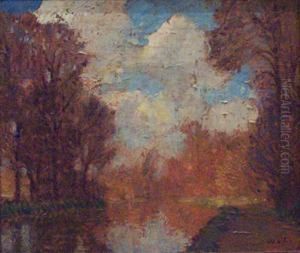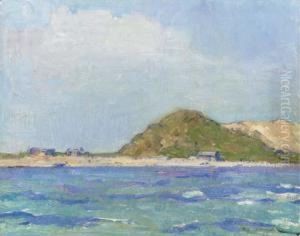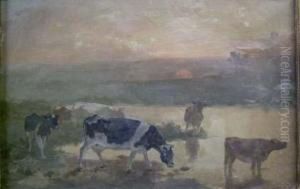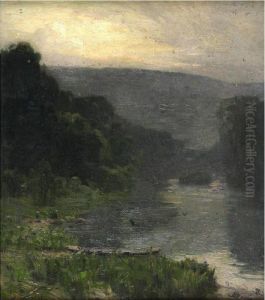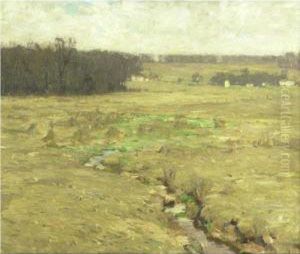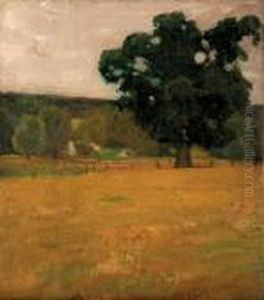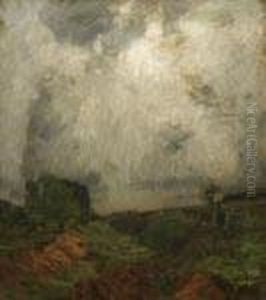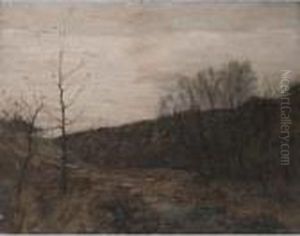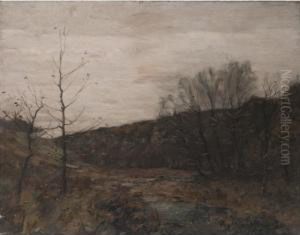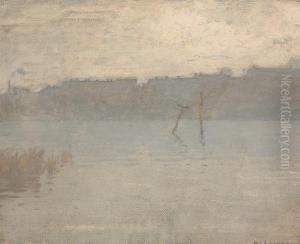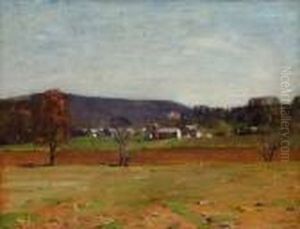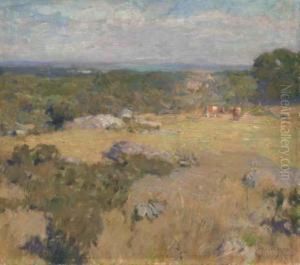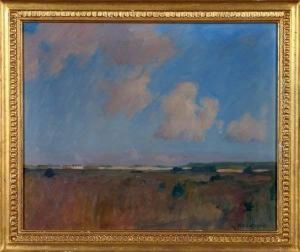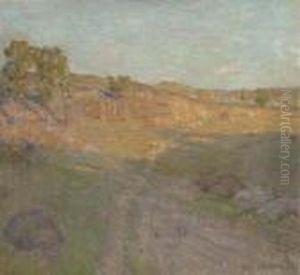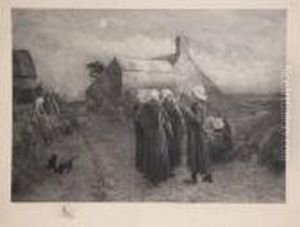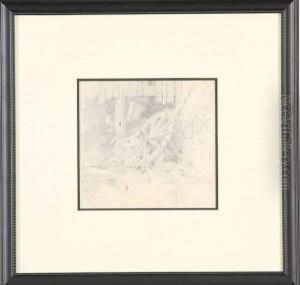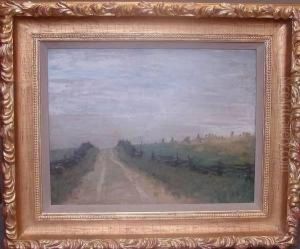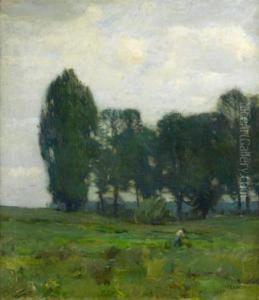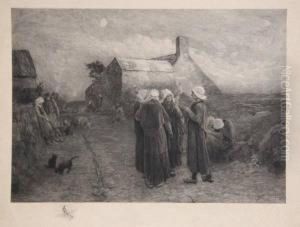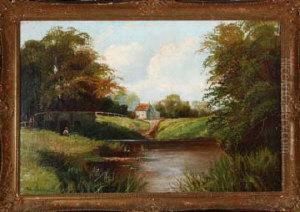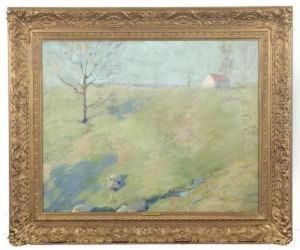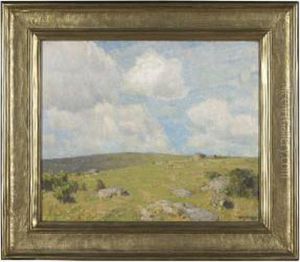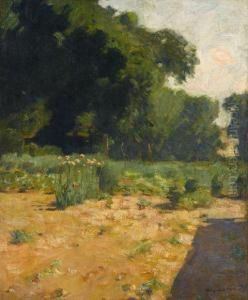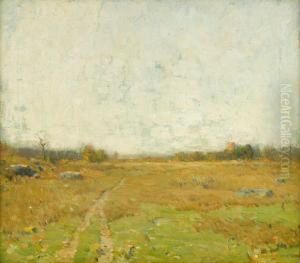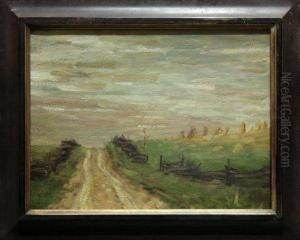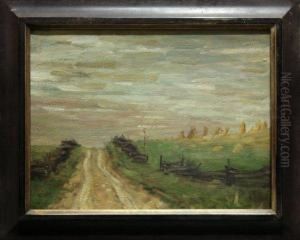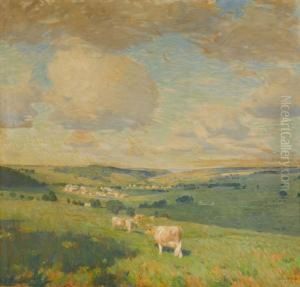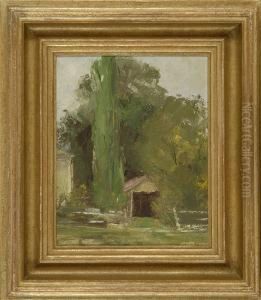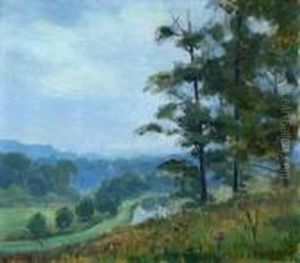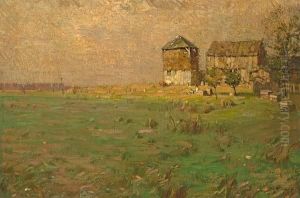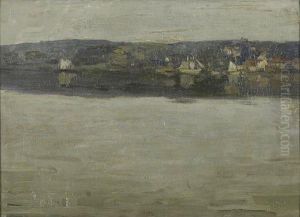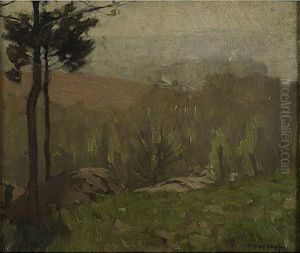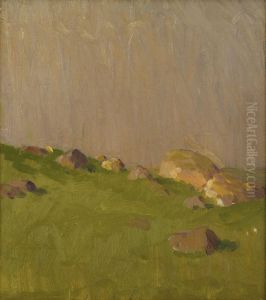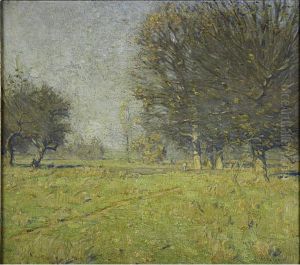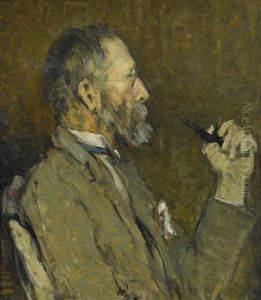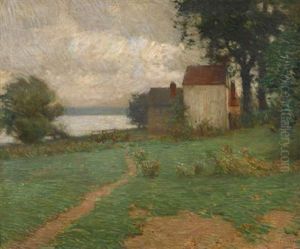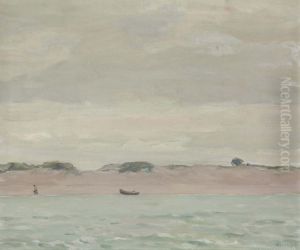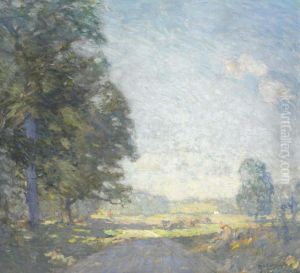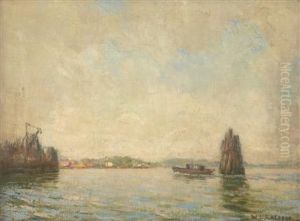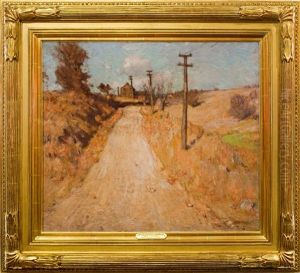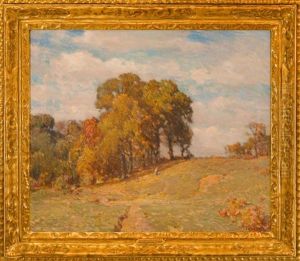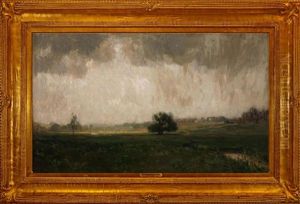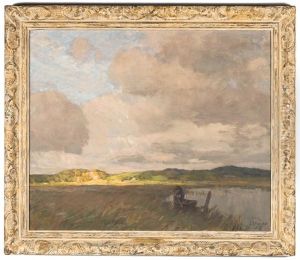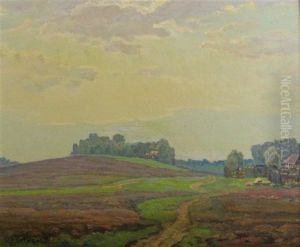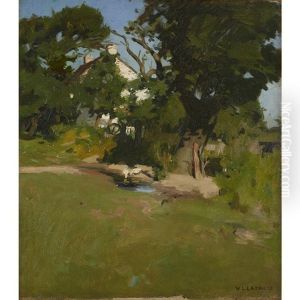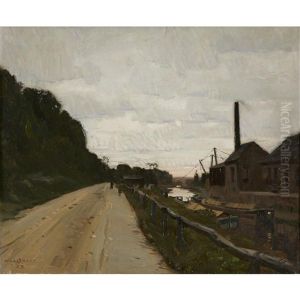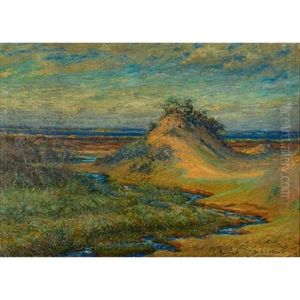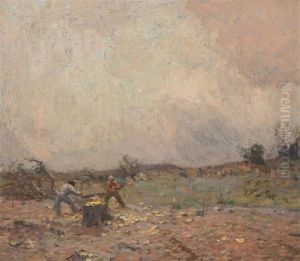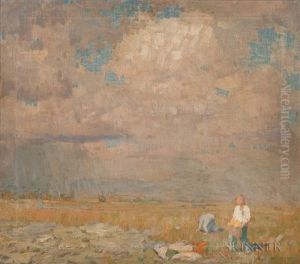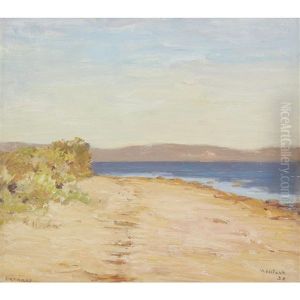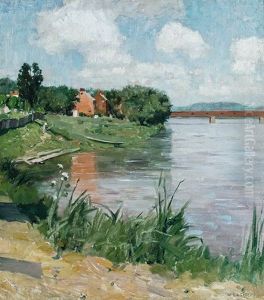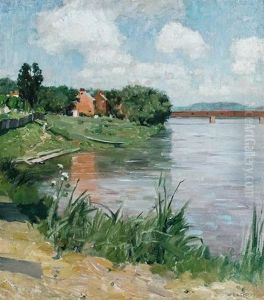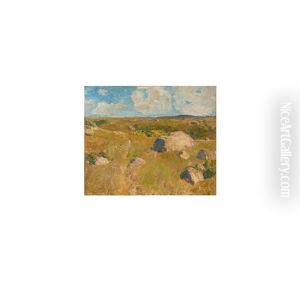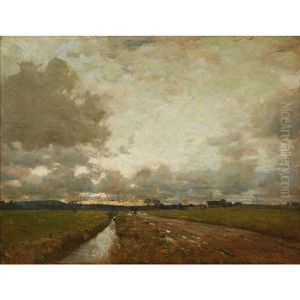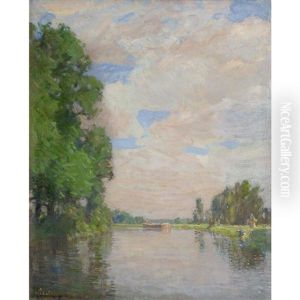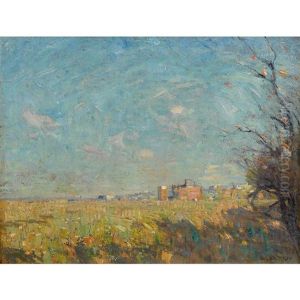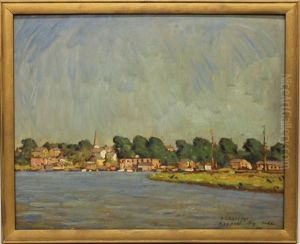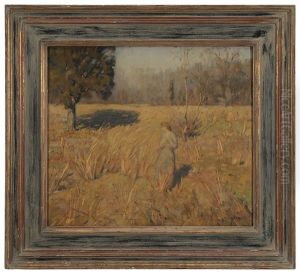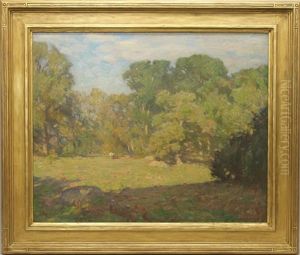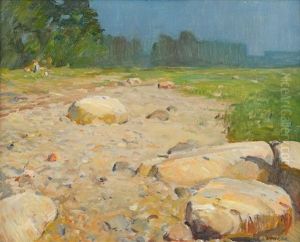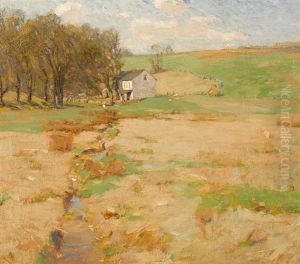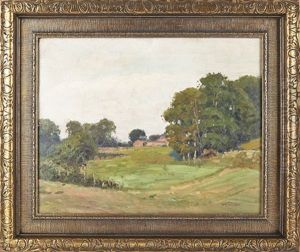William Langson Lathrop Paintings
William Langson Lathrop was an American tonalist painter, recognized for his integral role in the New Hope School of American Impressionism. Born on March 29, 1859, in Warren, Illinois, Lathrop developed an early interest in art, which was nurtured by his mother, a photographer. He moved with his family to Chicago at the age of 16, where he worked in a commercial engraving firm and took evening art classes.
Lathrop's artistic journey led him to New York City, where he studied at the Art Students League. He traveled extensively in Europe in the 1880s, which profoundly influenced his style. In England, he was particularly drawn to the rural landscapes, and he began to develop his characteristic tonalist approach, focusing on mood and atmosphere in his depictions of the natural world.
In 1899, Lathrop settled in New Hope, Pennsylvania, which was to become a center for a burgeoning art colony. His work, characterized by a subtle palette and a deep appreciation for the countryside, began to attract attention. He often painted en plein air, capturing the changing seasons and times of day, which became a hallmark of his style.
Lathrop became a mentor and friend to many artists in the New Hope area, including Edward Redfield and Daniel Garber. He was known for his quiet, contemplative scenes that evoked a strong sense of place. His paintings often featured rivers, trees, and rural landscapes, rendered with a soft, diffused light that conveyed a sense of tranquility.
Throughout his career, Lathrop received numerous awards and honors, including a gold medal at the 1915 Panama-Pacific International Exposition. He was a member of the National Academy of Design and the American Watercolor Society. Despite his success, he remained humble and dedicated to his craft, continuing to paint almost up until his death on September 21, 1938.
Lathrop's legacy lives on in the collections of many museums and in the continued appreciation for the New Hope School. His work captures a timeless, serene vision of American landscapes, and he is remembered as a pivotal figure in the development of American Impressionism and the artistic heritage of the Pennsylvania region.
